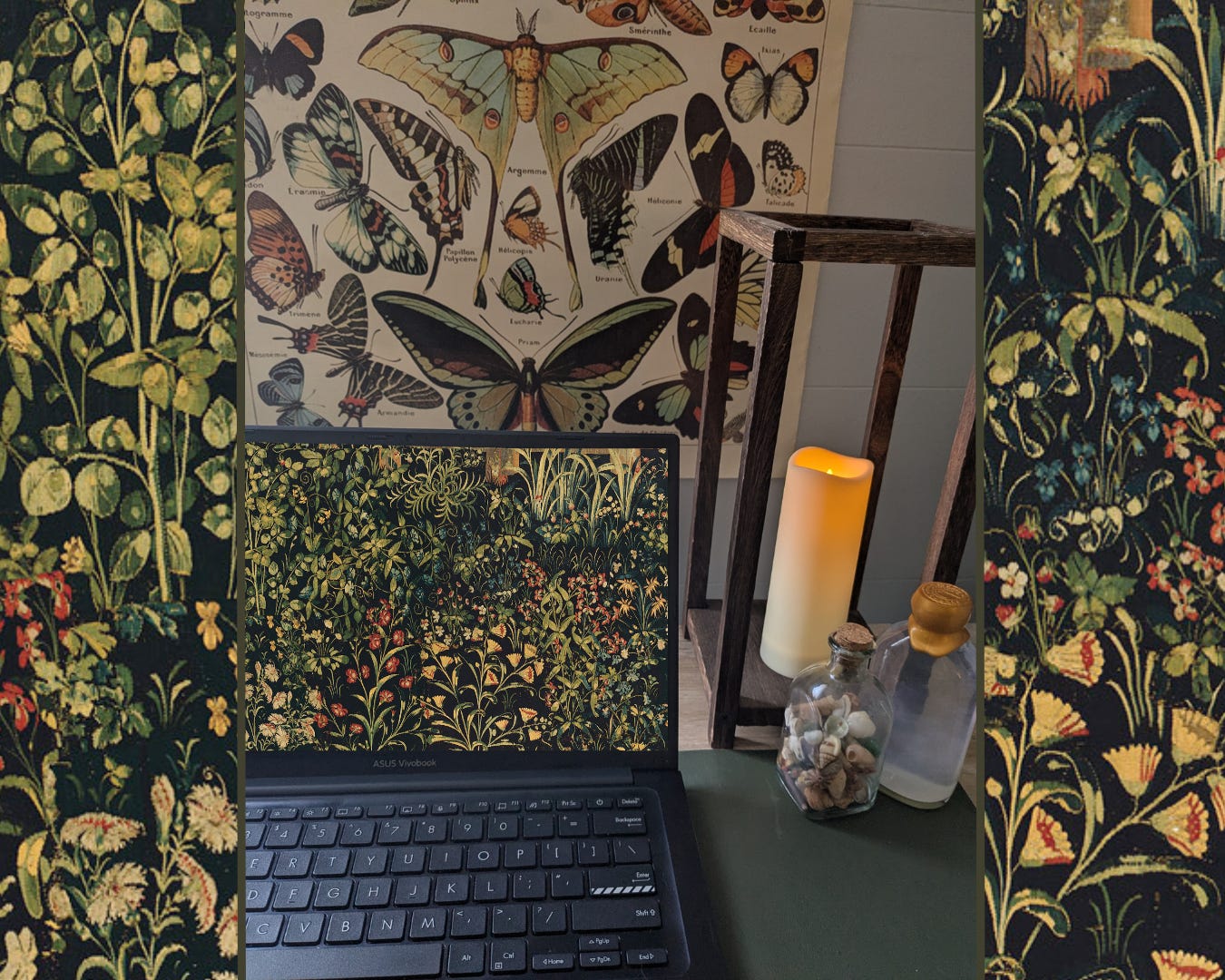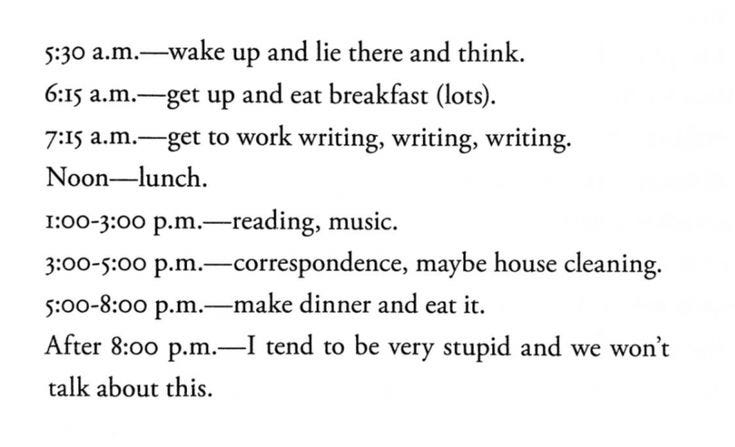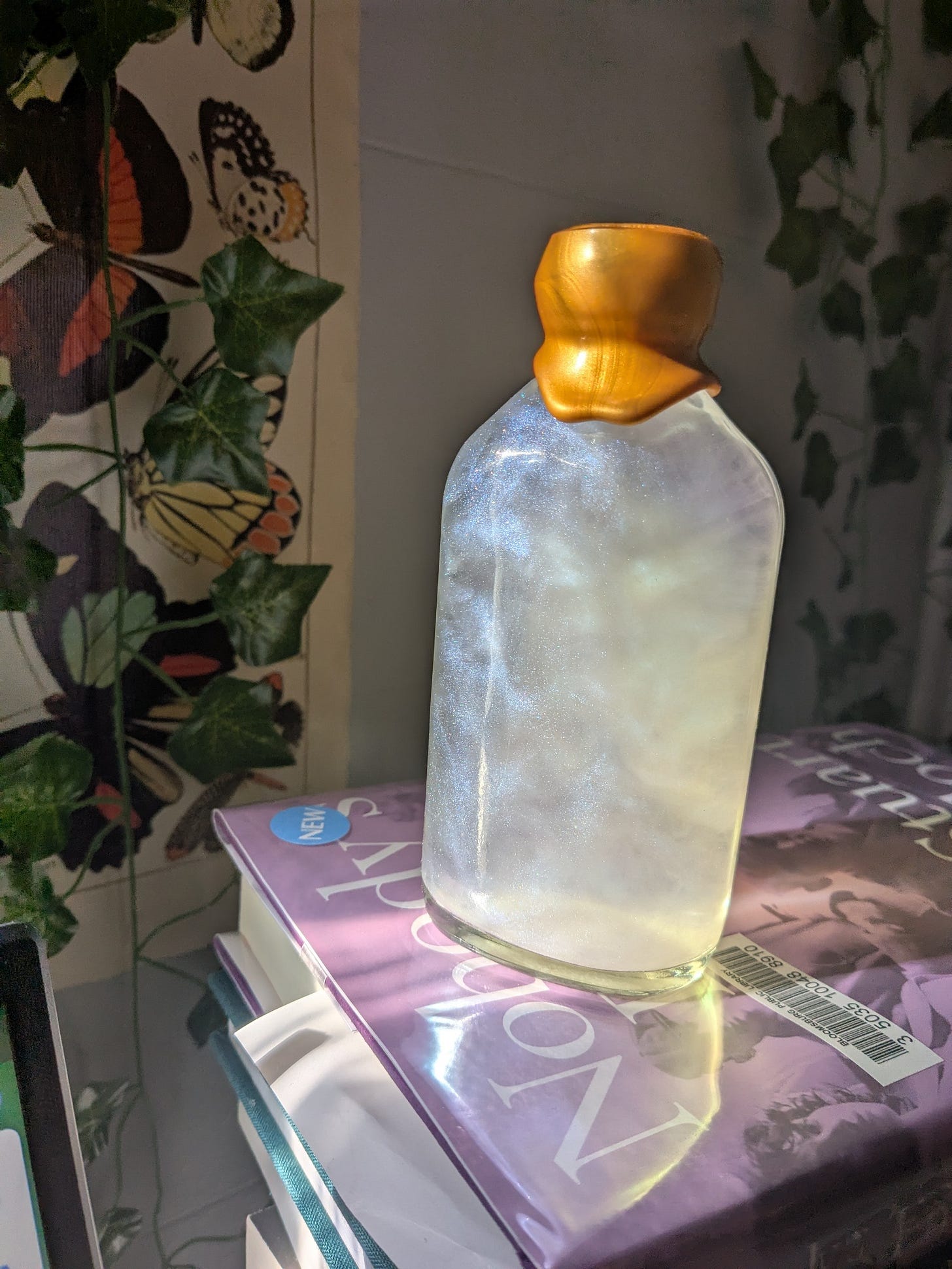My writing routine has shifted and evolved more times than I can count—before, during, and after my three years as a writing student. Hopefully, it’s only going to keep changing as my life keeps changing. This is only the beginning.
But as my own “writing days” continue to shift, I’ve stayed curious about the routines and habits of fellow artists—how they go about their days, what habits they stick to, and where they find the time for their art. (Most of us spend our days at work elsewhere so we’re able to keep making our art, after all!)
In fact, after watching a favorite YouTuber try some established older authors’ writing work-day routines, I gave a few of them a shot myself on some free days last year. As fun as it was, most of them were incredibly outdated and unrealistic for anyone who isn’t a full-time, well-off artist to follow.
Right now, my work schedule varies week by week. Some days I get to work at seven, some at nine, and some at twelve—it’s a little too up-in-the-air to detail entire days around writing time. I know a lot of people my age who are in the same place. So, instead, I have tiny habits for whenever I’m able to set aside a few hours to write.
I’ve found that the only way I’m able to do this flexibly is through transitions and rhythms.
When I sit down to write…
I make the writing atmosphere what I need based on what I’m writing. Maybe I’ll pull back the curtains and let as much light into the room as I can. Maybe I’ll open the window to listen to the sounds of rain or birdsong (as long as the sounds of traffic don’t drown them out).
I clear off any clutter left on my desk. I keep favorite trinkets like seashells and bottled art next to me.
I make a drink (probably matcha) and put it by my laptop.
I turn on my candle warming lamp or light a candle. Right now, I especially love my fantasy-inspired candles.
I set my notebook by my laptop. While I’m still working on this one, I want to be able to jot down things I think of or want to research instead of immediately opening a new tab and opening new rabbit holes.
I turn on music. But I have to be careful. As a music lover, this step makes or breaks me—I can obsess over finding the perfect playlist or queueing up songs in the perfect order. To avoid this, I often put one of my favorite vinyl records on my record player. So instead of risking minutes of distraction on Spotify, it’s just ten or twenty seconds to flip my record to the other side.
If I’m on deadline, I hide my phone.
Then, I write.
These habits are mine because they signal to my brain that it’s time to create. They may seem ordinary, but we all find inspiration in different places. I know a lot of writers who can’t get words on the page when there’s music playing, but I feel like I’m missing a part of myself when there isn’t a song in the background.
I’m inspired by nature, solitude, and comforting things. But you might be inspired by conversation, busy spaces, and movement. All it takes to know is paying attention. What makes you feel most alive? What makes you feel like—in that moment—you just can’t help but create?
Bursts of creativity are normal, but curating our creative spaces help sustain our creativity through changing seasons, rather than relying on fleeting inspiration when we feel like it. I believe habits like these can carry us through the creations of masterpieces.
All it takes is paying attention and deciding to show up.








Aww, I love this, Ryan. Little cues to help you start writing are so helpful, especially when you have to work with a less predictable schedule than some of the greats had.
These are some good thoughts. I've never really had a creative space I could control. I usually share a space with somebody else, which requires me to be very flexible in terms of what I do and how I shape the space. However, I am currently taking steps to make the composition lab at my school more artistically oriented. One thing that resonated with me was music! When I write, I tend to listen to full-length albums rather than curated playlists. When I'm at home, it presents more of a challenge, and I have to have a "get it done" mindset when I work. Thanks for the insight into another creative's process!